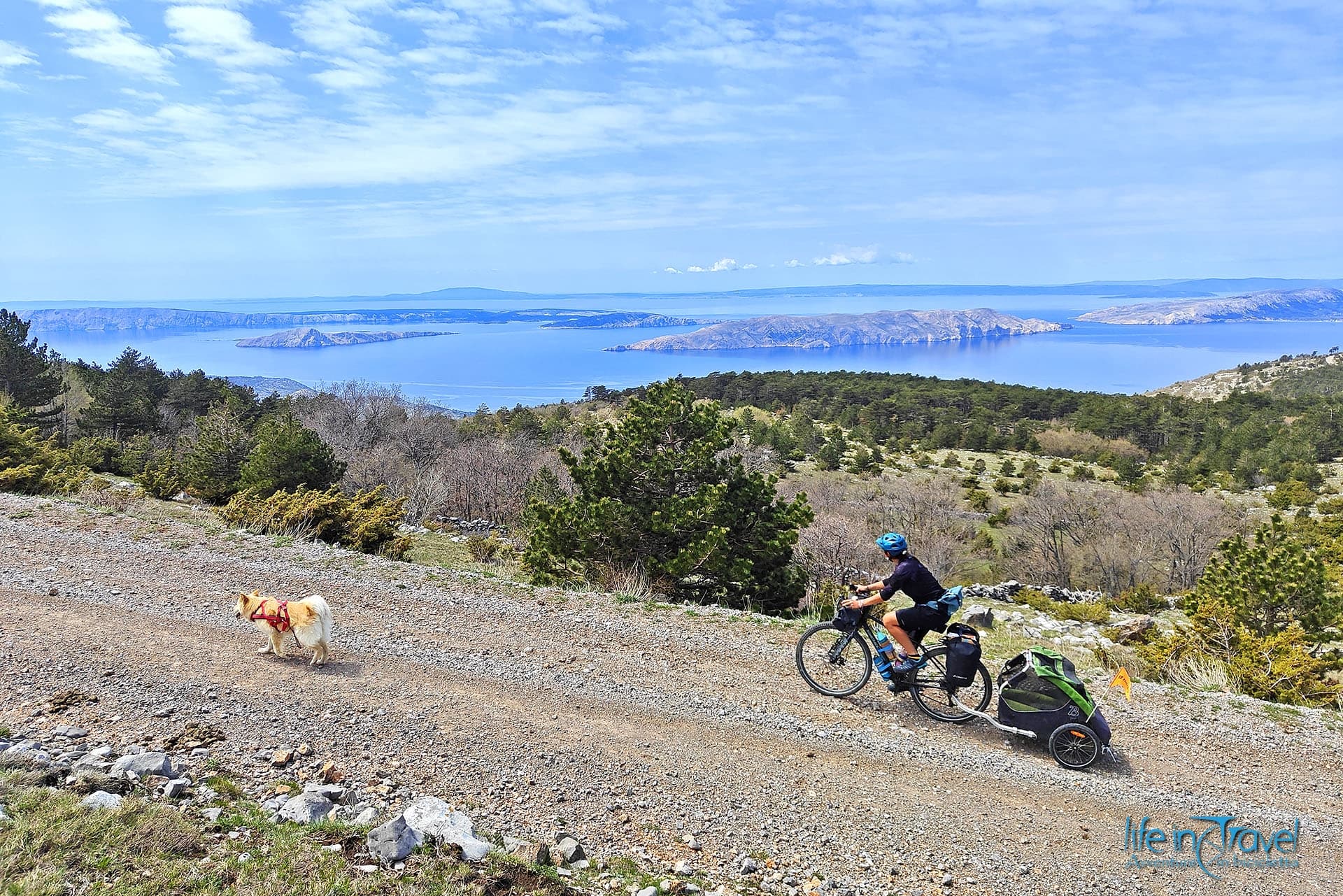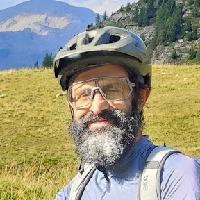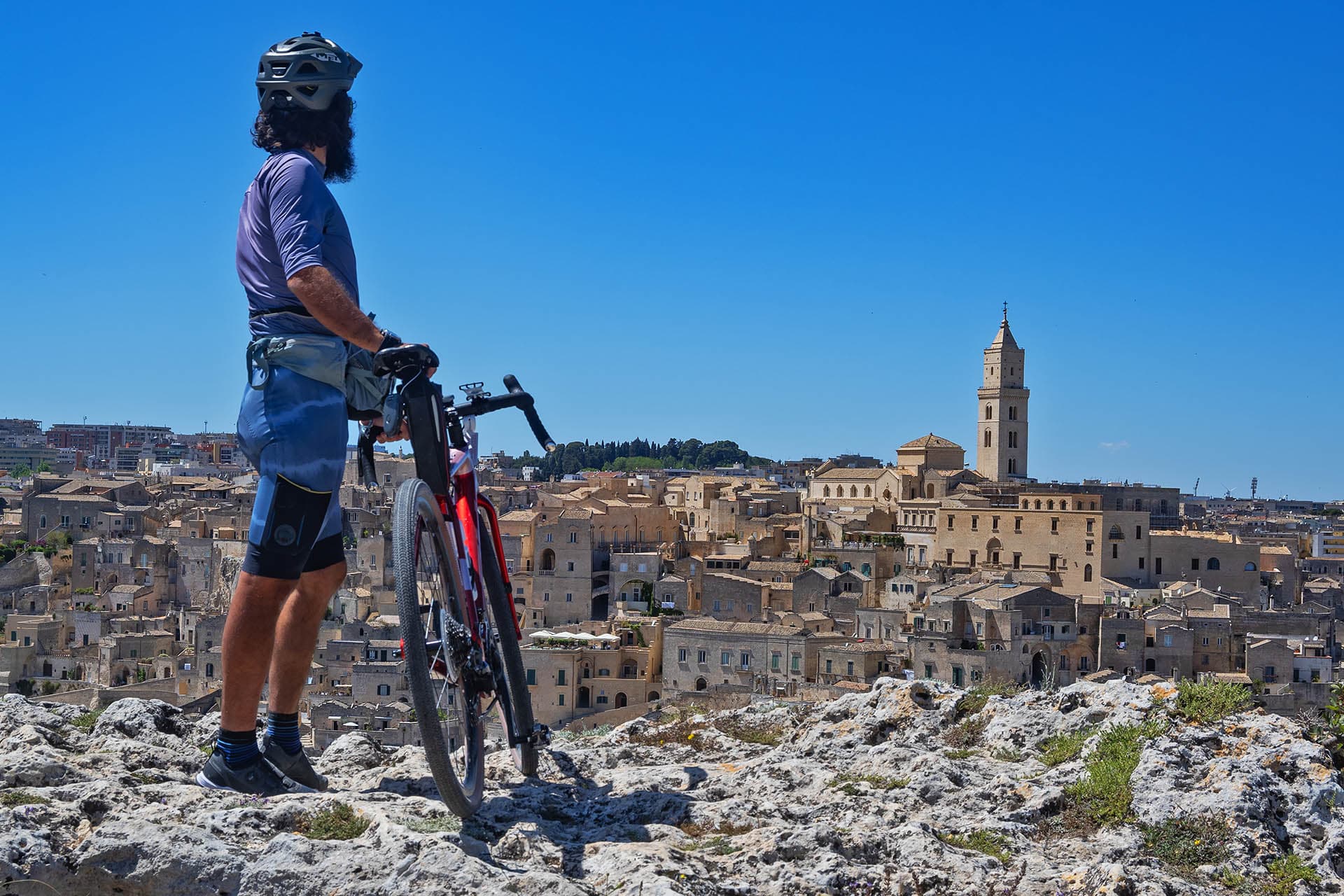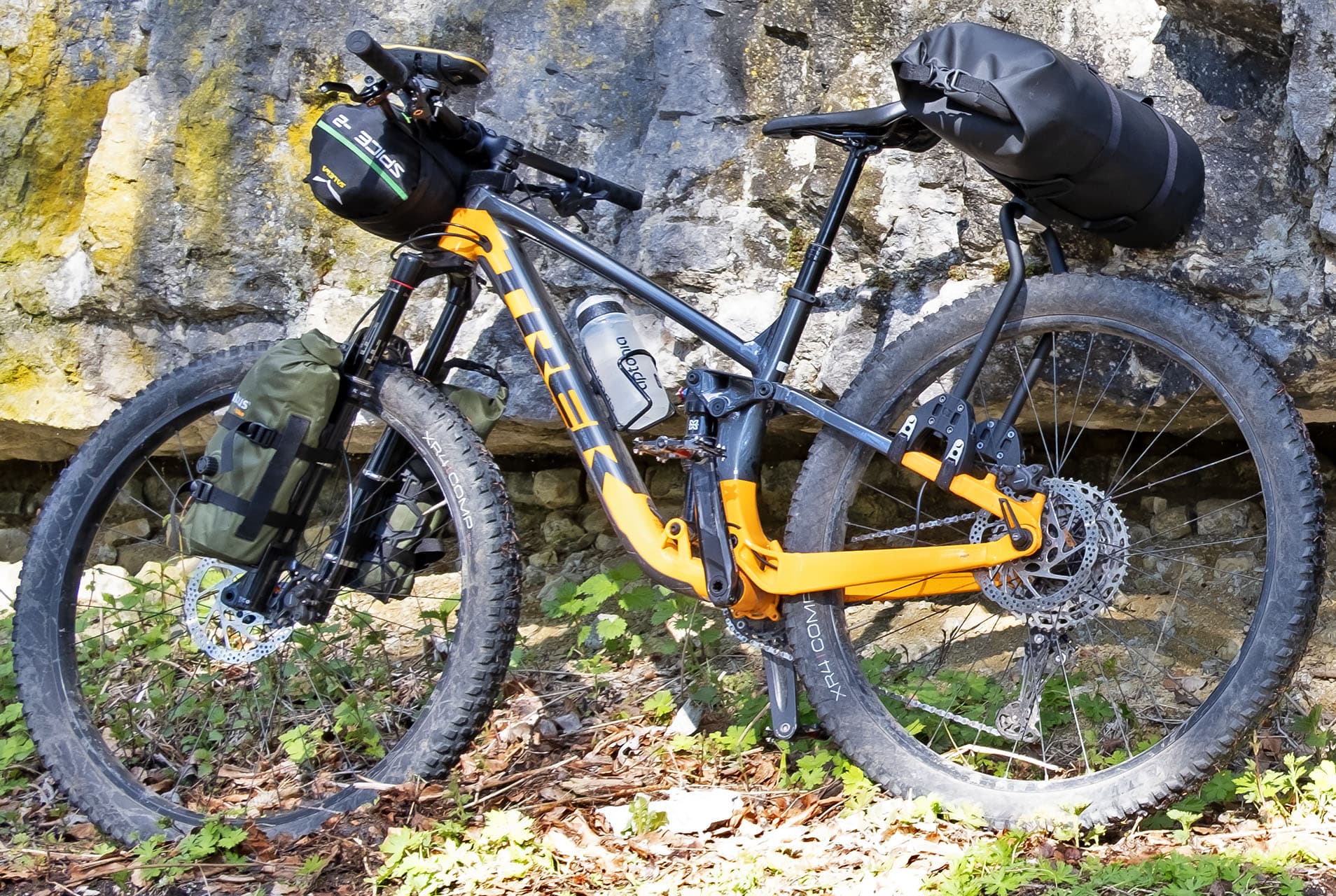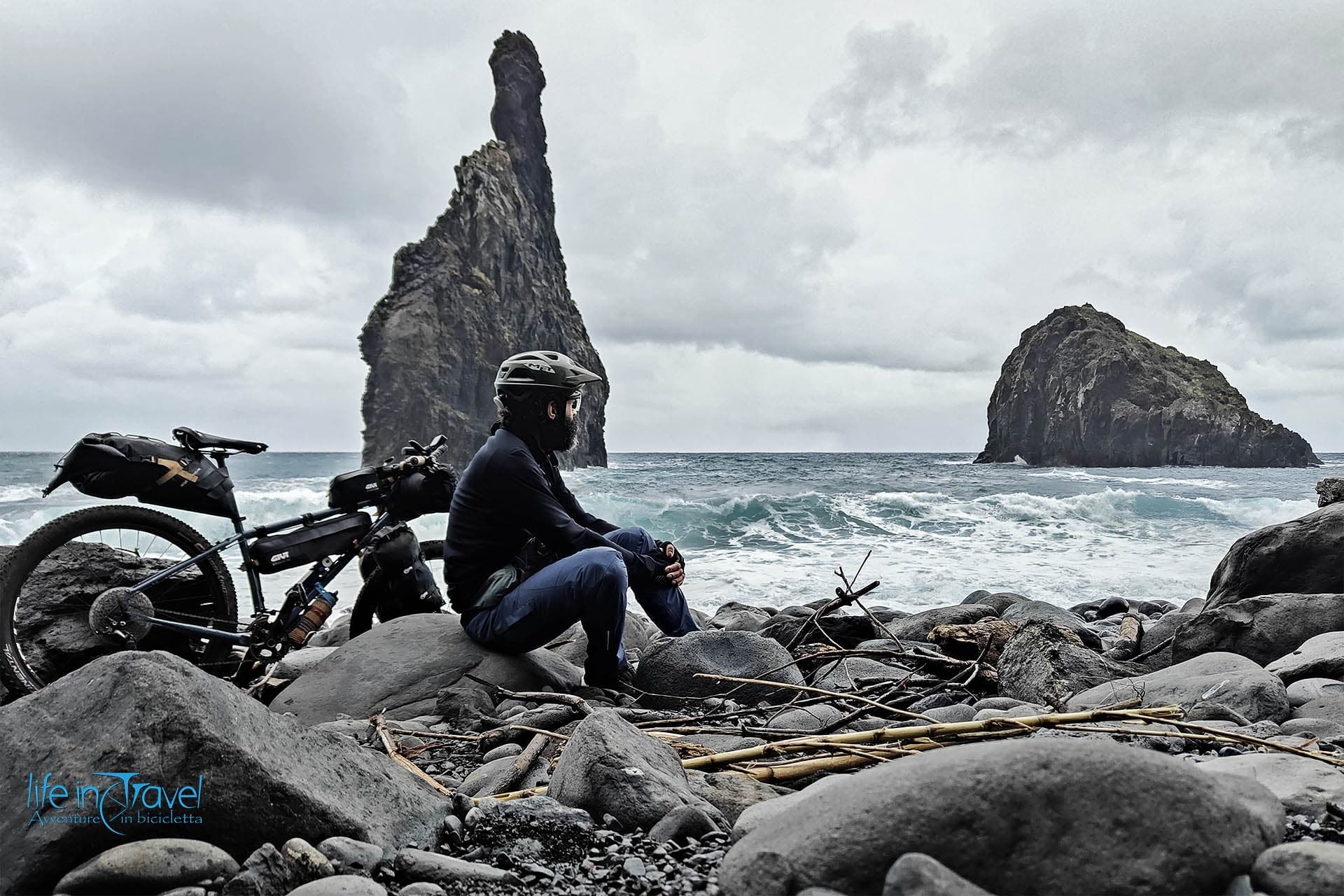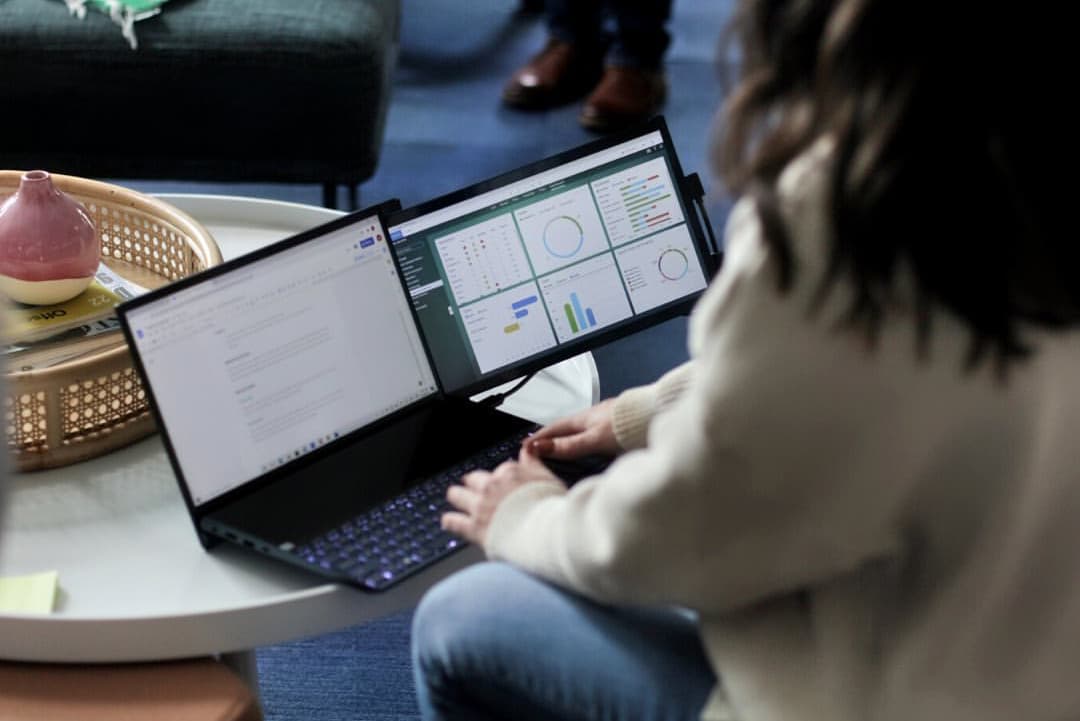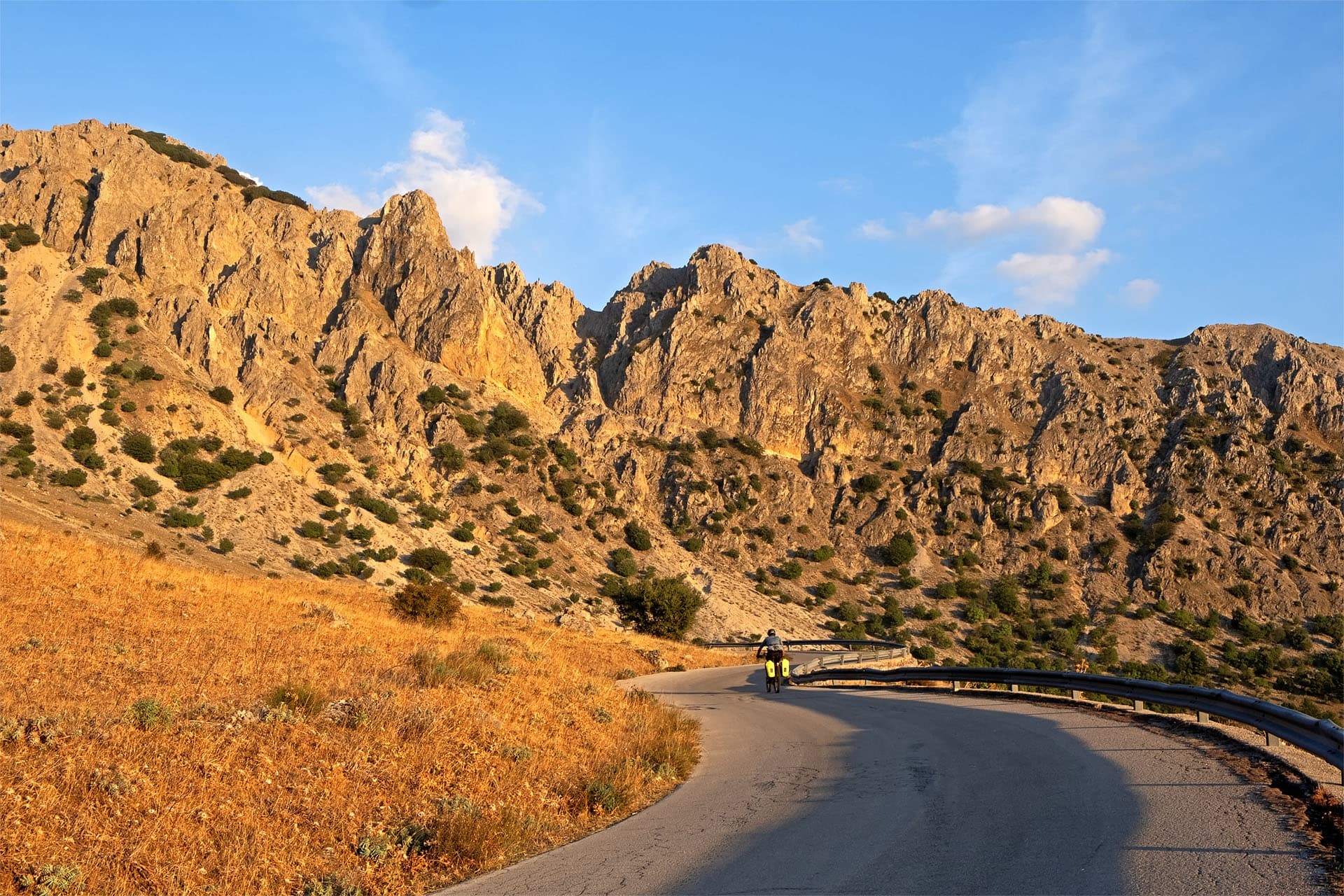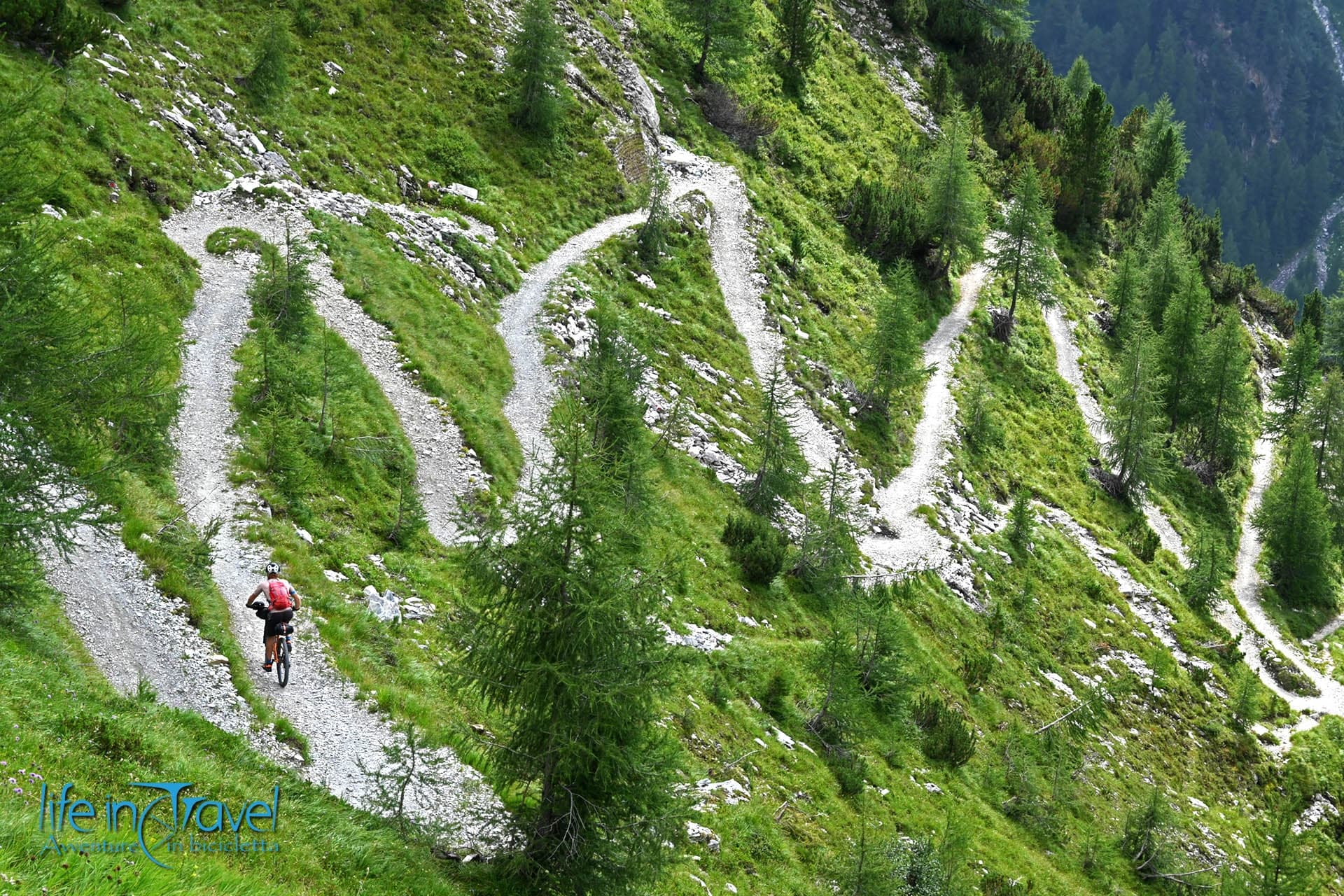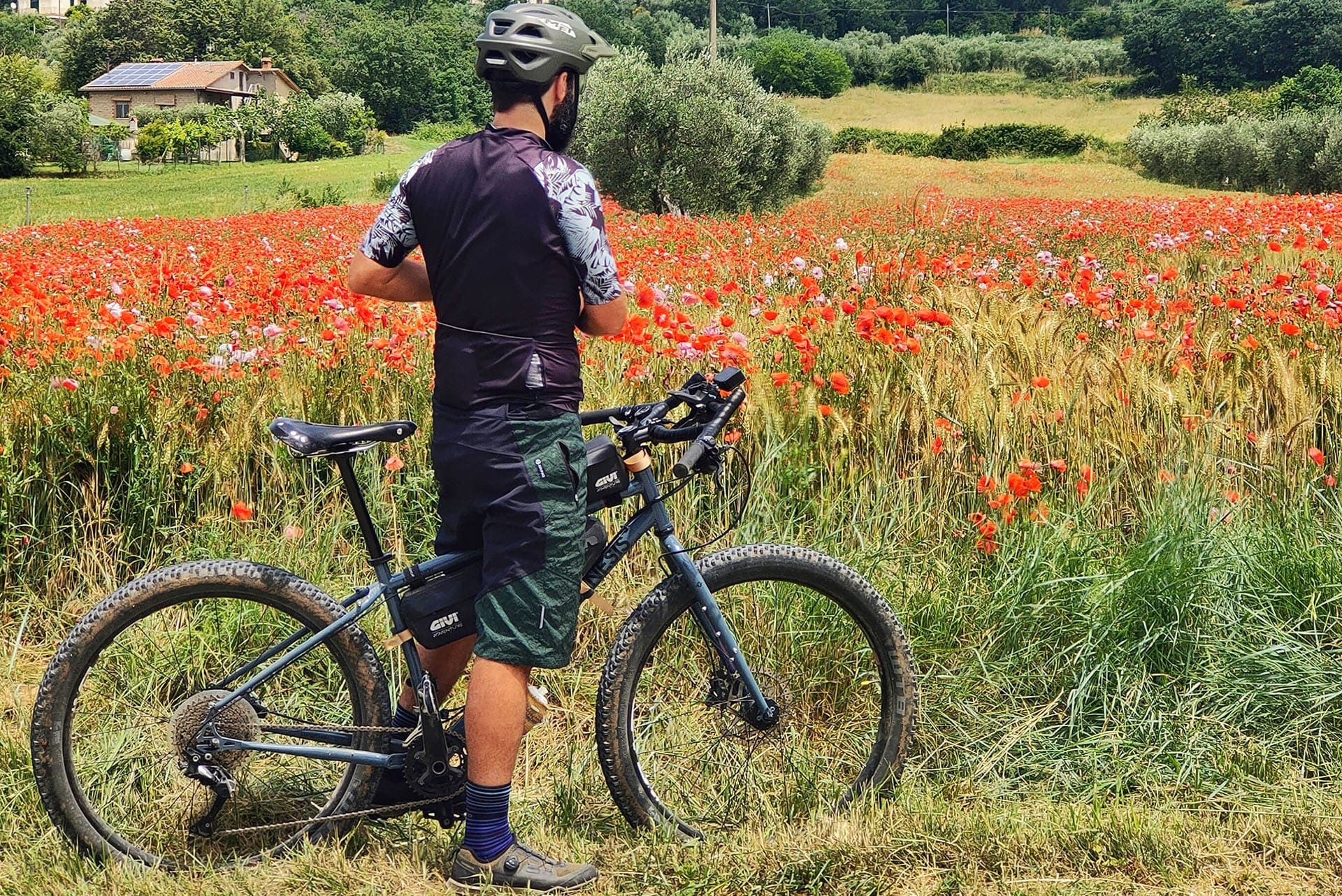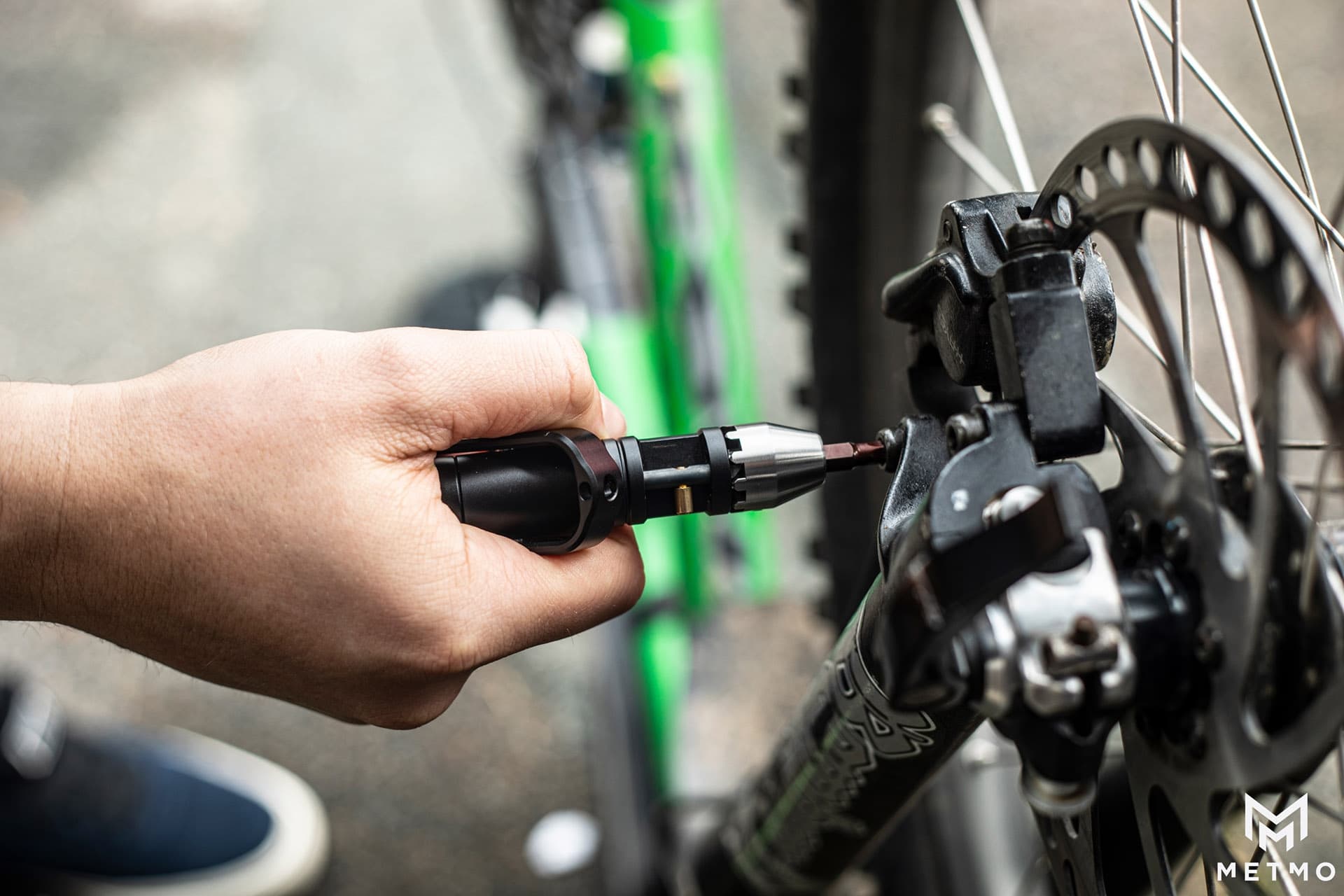Four days of bikepacking in Croatia, among dirt roads, beech woods, bears and breathtaking views over the thousand islands of the Adriatic coast. A journey to the green heart of the Balkan country, a cycling loop in the Northern Velebit National Park.

In this article
Northern Velebit National Park - cycling and hiking paradise
The scene of this bikepacking loop route in Croatia lasting a few days are the Bebie Alps (Velebit in Croatian) and in particular the Northern Velebit National Park, also if the itinerary goes beyond the edges of the protected area to descend to Gospić, the capital of Lika, the administrative region where the entire route takes place.
The area of the Velebit mountains is the largest mountain range in Croatia and has been recognized for decades as a natural pearl, so much so that since 1978 it has also been a UNESCO world biosphere reserve. There are actually two parks in the region: the southernmost Packlenica park, declared again in 1949, and the younger Northern Velebit park, established in 1999. With its 109 km2 within the which the territory varies from 518m up to 1676m of the peak of Zavižan, the park is a safe haven for hundreds of natural species, including bear, lynx, various species of bats, woodpeckers, Ural owl and many others more.

Tourism has grown year after year and today there are thousands of visitors who enter the dense network of trails and forest roads, some by bike, some with boots on their feet and some with ropes and harnesses to climb.
Cycling in Croatia is a great way to learn about the local culture and to explore its vast beauty. You may want to learn Croatian words and phrases before setting off on a cycling adventure to help you communicate with locals
We too did it this year, as usual, with bikes as faithful travel companions. We concluded our journey of just over 200 km in 4 days, traveling independently with tent and trolley to Nala in tow. We also found snow at high altitudes which slowed us down (at the beginning of May), so if you wanted to reduce the number of days to dedicate to this itinerary, you can do so: however, I advise you to stop at high altitudes and allow yourself at least three days of travel to fully enjoy the route and the area.
Transvelebit: a ring to be pedaled
The starting point of this ring-route in the Dinaric Alps, mostly on forest and low-traffic roads, on the edge of the Northern Velebit National Park, among UNESCO heritage beech forests and inhabited by brown bears, is Urvda Vratnik, the pass that divides the coastal region of Senj from the hinterland of Vratnik. 
The view from the parking lot where we left the car for four days is truly amazing: the Kvarner islands, from Krk to Rab, stand out against the turquoise waters of the Adriatic on the horizon. Bare and austere, they highlight the harshness of a virgin territory which in recent years has been discovered by mass tourism. Up here, however, the holidaymakers who love sunbathing on the beach find it hard to go and on our journey we practically always cycled alone (it was the beginning of May, in the summer there will certainly be a little more people, even if less and less of the crowded coast of Senj).
The track we followed doesn't present any technical difficulty and takes place mostly on secondary roads and dirt roads that can be pedaled, so it's perfect for a gravel bike, for a light MTB or for a travel bike. The first part is the most demanding, with the climb in the park up to the Zavižan refuge and then the ups and downs to reach Gospić. The second part of the route initially rides on the plains in the valley of the Lika River before climbing up the slopes of the Northern Velebit mountains, passing the village of Kutarevo and closing the loop. The climbs are all pedalable and pleasantly immersed in beech forests that alternate with high-altitude conifers and pastures of the highest passages towards Zavižan.
The supply points are few but strategic: the Zavizan refuge, the town of Gospic and the village of Kutarevo are more or less equidistant and well distributed also from an altitude point of view. But notice tochat and let's see the route in detail.
Up to the Zavižan refuge
The first day of our route starts from the Utvrda Vratnik pass, easily reachable by car from the coastal town of Senj. The panorama from this pass is amazing: you can admire dozens of islands and kilometers of Croatian coast even if we will only discover later that the best is yet to come!
Just below the dilapidated building of the now abandoned Hotel Vratnik a small downhill road branches off which will soon become a dirt road. We take it, not before taking a few pictures of the panorama, but only a few hundred meters below we turn left uphill. The road first crosses a beautiful beech forest and then cuts through a clearing from which there are still splendid views of the coast. To the north you can see the last offshoots of the island of Krk while to the south you can see the island of Rab. Further away, closing the horizon, Cres. In between, many small bare and desolate islands. 

The route is immediately fascinating, we are alone and Nala can run free. We find ourselves among some mountain houses and follow the path foreseen by the track studied at the table but we soon realize that it is too loose and stony for Nala's trolley. We decide to return to the paved path which leads, with a short and fast descent, to Stolac. The deciduous trees have given way to pastures and some pine woods scattered here and there. The few houses in Stolac are all closed and, apart from a couple of shepherds, we don't meet anyone.
In the distance you can see the beautiful dirt road that goes around Mount Prolog on the western side, towards the sea, while our track would lead us to the opposite side. We decide to change route once again and we won't regret it at all. The terrain is excellent, the views are splendid and the bikes flow effortlessly up to a beautiful natural amphitheater which opens onto the panoramic point of Liskovac at about 850m above sea level.


The climb becomes a little more intense, spring flowers accompany our slow advance and at the top we are also joined by two Swiss cycle-travellers who left home, fast and light, to whom we offer a little chocolate.
A short and rapid descent takes us back to another road that rises from the sea, in Oltari, and which would lead to Krasno, the main gateway to the Northern Velebit park. We follow it uphill for a few hundred meters before turning right and heading towards the entrance to the Babić Siča park.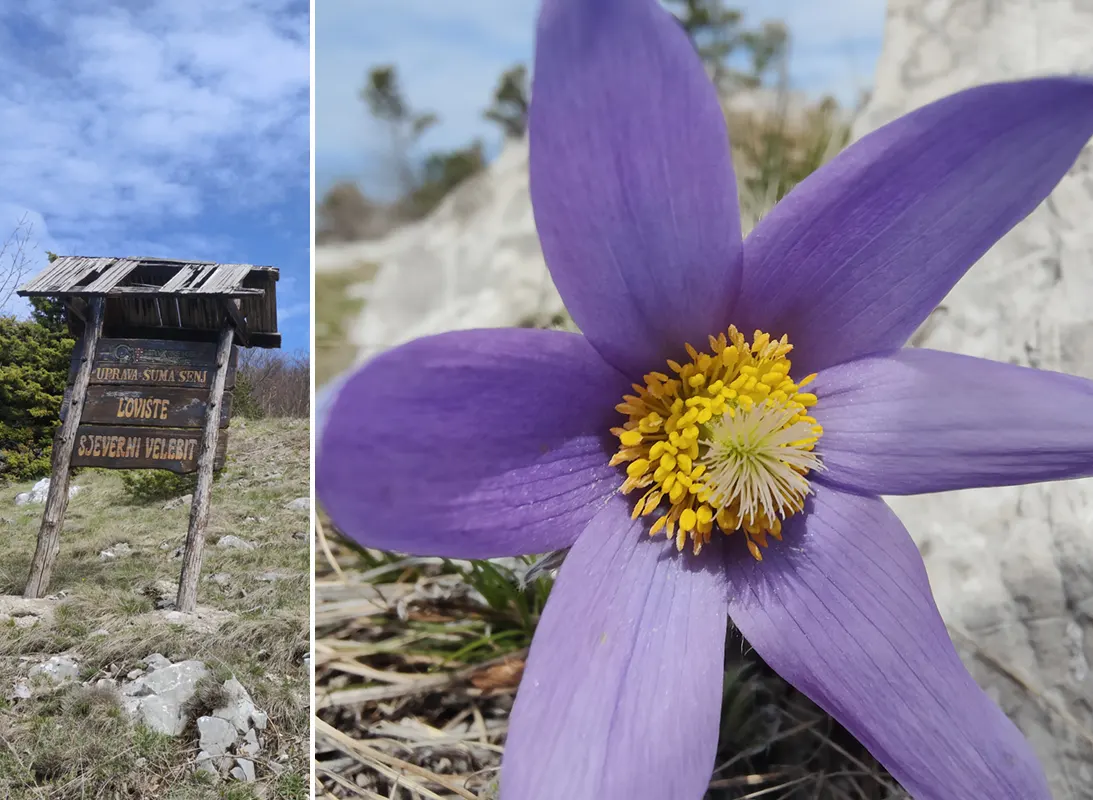
The road plunges back among the conifers and climbs gently on asphalt for the first four kilometers while it rears up a bit before overcoming the difference in altitude necessary to reach the park entrance at around 1350 m with a few hairpin bends. The asphalt gives way to the dirt road and the beech trees that were already covered with intense green leaves further down, are still bare here. The route is beautiful and the climb is never too hard. The first snow on the side of the road appears shortly after and increases as we climb in altitude.

Above 1500 m the white blanket also begins to cover the road and we advance sliding until we reach a large parking lot among the rocks. A look up allows us to identify the refuge, today's destination. The last efforts again on asphalt allow us to reach the entrance to the Zavizan refuge at 1594m, the highest point of this itinerary and a few tens of meters from the highest peak of the park.


We settle down and have dinner outdoors with what, fortunately, we had brought with us, because here there is no restaurant service other than hot tea or coffee. The manager is harsh but kind and we exchange a few chats in the broken English of all of us. We thus discover that the oldest Croatian meteorological station, dating back to 1953, is also located near the alpine refuge.
As soon as the sun goes down, we cover up because the cold is biting. Nala finds shelter in the woodshed while we enjoy a tearful sunset on the coast of Lika, doubtful about the possibility of continuing the next day given the snow on the road.



On the edge of the park up to Trnova
The night is freezing but the heavy felt blankets in the shelter help us keep the temperature at decent levels. A good hot coffee in the morning helps us gather courage and set off again towards the south. We'll try to follow the pre-established itinerary, hoping that the snow isn't too deep, also because being May it's still melting and it's not hard enough to ride on it.
Let's retrace the road followed the previous day downhill for about a kilometer and turn right near a small church. In less than no time we reach the Botanical Garden which develops along the side of the road. Immediately the snow peeps out on the roadway and we are forced to push, sinking up to our shin. Advancing is tiring and above all Vero struggles with the trolley. Nala, on the other hand, is ecstatic and enjoys the freedom to run on the soft blanket. Unfortunately, the first kilometers are immersed in the woods, on the ridge where the coastal Mediterranean climate and the inland continental climate collide.

It's impossible to ride on the road, which is wide and I imagine it would be fun to ride if it was clear. We stay at altitude for a while, then we start a gentle descent which becomes an ordeal for us: we are forced to push the bike and move forward at 2-3 km/h for kilometres. Only after 3 hours did we manage to lower ourselves enough to be able to try pedaling between patches of snow and clear stretches of road. The footprints of ungulates and mammals accompany us and from time to time Nala tends her ears in ambush, but the only presence we can see is that of an elusive squirrel climbing the trunk of a pine tree.


Finally we reach the asphalt road 5126 that goes up from Krasno. On the saddle we continue to descend, now fast and with Nala protesting in the cart, up to Careva Kuća, another alpine hut in the park which can be used as a good base for makeshift accommodation (when we are past us it was closed). From here you go uphill for a while to then lose altitude again entering the Štirovača valley, in a much greener and more hospitable environment than the rocky one you have crossed so far. An agglomeration of a few houses that appear abandoned in the plain are all we encounter before returning to immerse ourselves in the wild nature of the Dinaric Alps.


The route continues its descent for a while longer, until it reaches around 1100m, before leaving the paved road, keeping to the right and deviating towards the south. You will also come across cycling signs indicating the Gospić Bike routes: we are following number 4.



The bottom becomes dirt again, the environment remains majestic and a couple of hairpin bends make us gain altitude for a while. The ups and downs continue and the panorama is captivating: the rock formations that surround us are sculpted by the atmospheric agents and the light of the approaching sunset warms them. Another short and gentle ascent anticipates the return to the asphalt and is the prelude to the dive that makes us lower in altitude up to the 600m altitude of Trnovac, where a church above the village, with a beautiful freshly mowed meadow, seems to be it was put there on purpose to house the tent of two two-wheeled wayfarers.
The gardeners still with brushcutters in hand greet us, the scent of freshly cut grass inebriates us and the smile of the oldest of the workers who approaches with two bottles of beer in hand are the most pleasant closing we could expect of this wonderful bikepacking day in Croatia.



Gospić and the Lika Valley
The easiest and most peaceful day of the whole tour starts early, with the warm sun filtering through the canvas of the tent. Trnovac turns out to be a very small rural center where there is not even a small shop. We immediately leave the main road to proceed onto a secondary route that will soon become a dirt road. The heavy rains of recent days have flooded the pastures around the valley and the road also has huge puddles. We manage to pass avoiding the worst and find the asphalt again near Smiljan, a small village known thanks to one of its well-known citizens: Nikola Tesla.


We come across, almost by chance, the center and museum built in his honor near what is supposed to be his birthplace. Tesla was a great inventor and physicist born into a Serbian family in Austro-Hungarian territory (currently Croatian) and naturalized in the United States. He is best known as the winner, together with George Westinghouse, of the so-called "War of the Currents", which saw Thomas Elva Edison defeated.
Let Nala rest in the trolley and dedicate ourselves for a while to discovering the Nikola Tesla Memorial Center, discovering the bizarre life of this genius.
Get back on the bike we follow secondary roads for a while before getting into traffic and reaching the main center of the area and capital of Lika: Gospić. Here we manage to have a hearty breakfast after two days of frugal meals and replenish the pantry for the next two days. The town has nothing interesting to see and therefore after having done all the errandsnecessary to be able to survive, we get back on the saddle and go back to plowing the gravel roads of Croatia by bike.

The idea is to move a little further east and follow the motorway service dirt roads back north, again at the foot of the Northern Velebit mountains but this time on the eastern side. The first kilometers run away pleasantly but unfortunately as soon as we reach the side of the main artery, we immediately realize that the rains must have been really torrential in the last few days because most of the meadows are flooded. We try anyway and end up having to wade through a real lake to get out of trouble: Nala is forced to swim for a while and we lift the bike and trolley just enough to avoid the worst.


We study an alternative route and decide to leave the dirt road alone to follow the D50 road that passes through Perušić. However, traffic remains rather small and the only one dissatisfied with this detour is Nala: instead, we take advantage of the opportunity to stop once more and also treat ourselves to a draft beer before starting to look for a place for the night.
Just beyond Perušić we leave the main track and take a road, still paved but secondary, which leads to Krš following the train's route. The sky opens up after a thin haze has blocked the sun all day. We are again in the middle of endless expanses of woods, the perfect habitat for wolves, bears and ungulates of all kinds. At the foot of the hill we decide to stop and find a good place by the side of the railway... only late at night, woken up by a deafening noise, we will understand that it is still active!


In the evening we warm up a new ready-made soup while Nala voraciously munches on her daily croquettes and then we lie down in the nomadic house that we always carry with us on these adventures. The tent is a extraordinary invention, an instrument of exceptional freedom and independence that I will never be able to do without.
Kuterevo and the bears
Once again the last day of the trip came faster than we would have liked. But there is still a nice stretch of the Northern Velebit park to pedal and perhaps the most suggestive of the roads we traveled on this bike trip in the Balkan peninsula.
After taking down the tent and having a quick breakfast, we immediately head to the entrance to a dirt road that climbs gently but steadily towards the north-west. We are outside the borders of the national park but the landscape is equally fascinating and the morning mist that surrounds us makes our advance even more impressive. The muffled silence of a gloomy day gives us a world that seems to be ours alone. The road climbs up to almost 1000 m of altitude, and then winds its way through green panettone covered in woods.


At the foot of Veliki Tisovac we decide to stay on the western side of the ridge, then descending on the paved road that joins Perušić to Krasno. The whole route up to here is majestic, between rocks that seem to have been thrown onto the earth by the gods and enchanted humid woods whose feet warm up under a thick blanket of emerald green moss. The narrow mule track is almostbras to have been dug by hand meter by meter. Even the change of surface, from gravel to asphalt, does not reduce the suggestion of a territory that does not present human contamination for tens and tens of kilometres. A short ascent and a quite rough and stony downhill path lead us to the entrance of Kutarevo, a village that seems to have come straight out of the 19th century.


Today, the village has become known for the bear sanctuary it houses. There are about twenty specimens over a large territory, divided into several rather large areas. All these animals have painful stories behind them: some come from zoos or circuses, others were run over by tiny babies, still others lived in tiny cages until they were transported here.
The Velebit area has a deep bond with these predators which are present in large numbers in the forests of the area. We leave the bikes and wander around the sanctuary observing the fawn-fur giants feeding and relaxing: they are majestic and wonderful animals, which must be respected, preserved and feared.



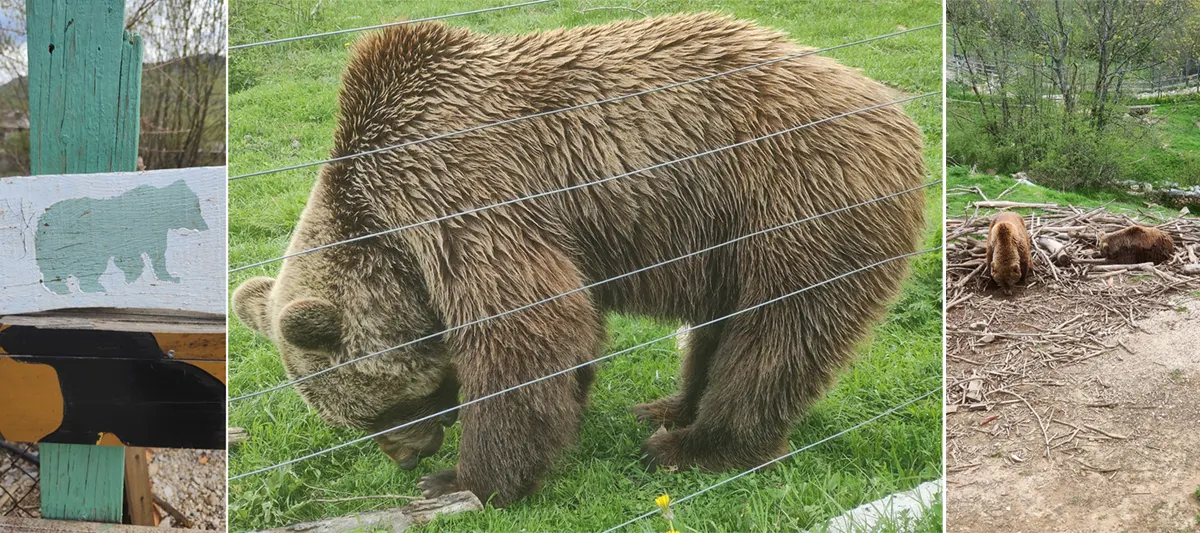
After a quick snack, we resume pedaling along one of the toughest ramps of the entire tour. The asphalt, however, comes to our rescue and we manage to cross shortly after, leaving behind Kutarevo, its valley and its special inhabitants. A short downhill stretch takes us to the last forest road that will cut through the wood to take us back towards Vratnik. This road is also sublime and out of traffic. After a few kilometers of ascent, the route remains at high altitude and then drops steeply to Vrzići from where a last gravel road in the woods with a slight ascent takes us definitively back to Utvrda Vratnik.
This concludes our bikepacking trip in Croatia, on the gravel roads of the Northern Velebit National Park and beyond. The Dinaric Alps gave us a suggestive and unexpected welcome, which we will pleasantly remember thanks to the landscapes, panoramas and suggestions experienced.



